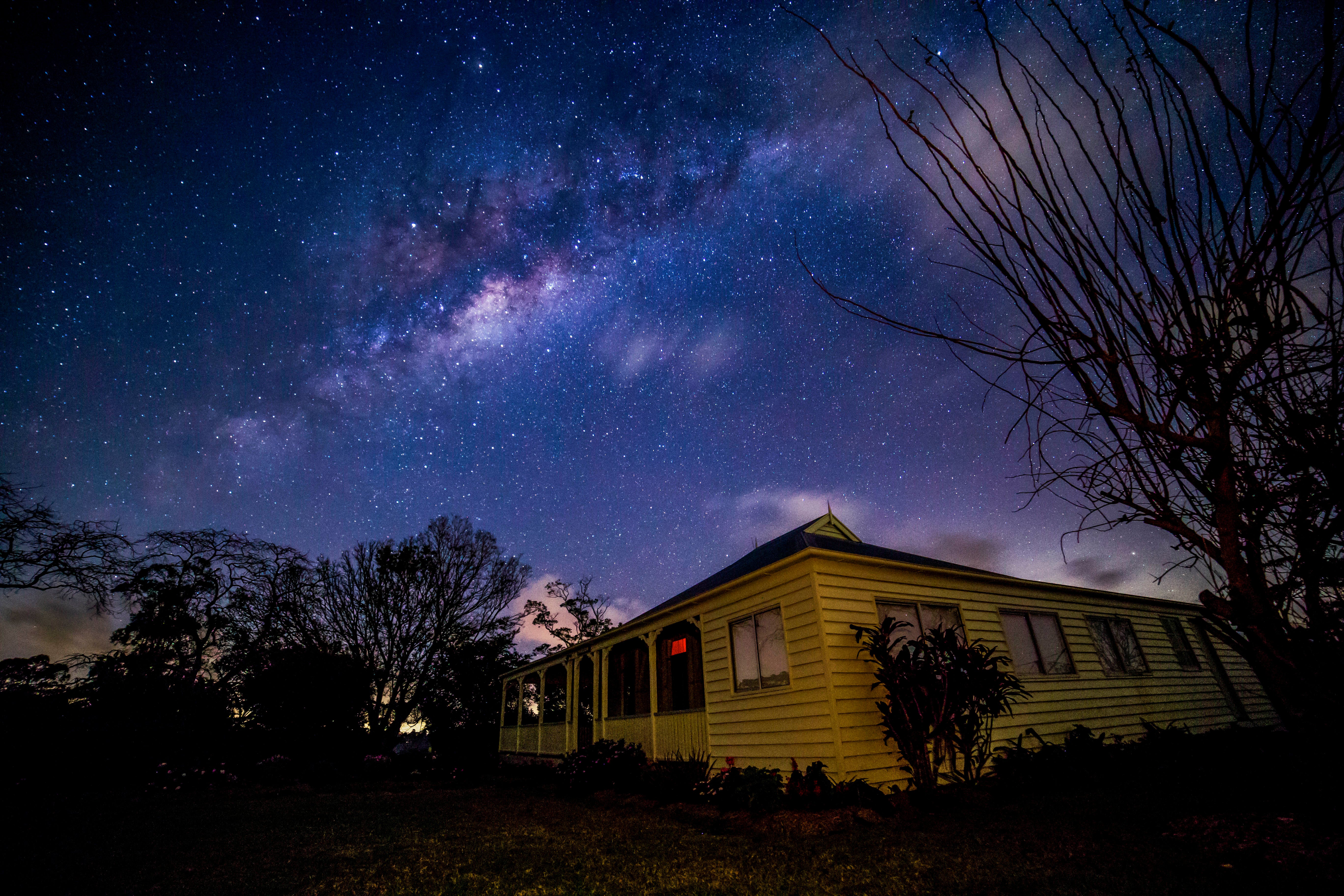'Dark sky' reserve benefits could be astronomical
The Sunshine Coast could become an astro-tourism and sustainability star thanks to a proposal to create an expansive Dark Sky Reserve in the hinterland.

Credit: Dr Ken Wishaw and Geoff Simon
The Sunshine Coast could become an astro-tourism and sustainability star thanks to a proposal to create an expansive Dark Sky Reserve.
The dark-sky movement is a global campaign to reduce light pollution.
Establishing and maintaining a reserve would contribute to an increased number of stars visible at night.
It could also improve wellbeing plus health and safety for people and wildlife while bringing thriving tourism business to hinterland areas.
A Dark Sky Reserve requires at least 700km2 of quality dark sky and demonstrated commitment to reduce light pollution through excellent outdoor lighting and public education.

The push for a reserve is gathering momentum in our region with Sunshine Coast Council unveiling a proposal to establish a Dark Sky Reserve at its latest meeting (November 2023).
Informed by preliminary investigations, the proposed Dark Sky Reserve would encompass almost 900 square kilometres in the Mary River Catchment and adjoining national parks in our local government area.
Division 5 Councillor Winston Johnston said the proposed dark sky reserve, which would cover 38 per cent of the region, would bring a variety of benefits for both people and nature in our Sunshine Coast Biosphere.
"We recognise close to 15,000 members of our community call this area home, including those in Maleny, Mapleton, Montville, Witta, Flaxton and Conondale,” Cr Johnston said.
“This proposed designation seeks to continue to support and protect the landscape and character of their neighbourhoods, including the unique night-sky values, while they continue to live, work and play.

“A dark night sky improves community wellbeing and is important to our native wildlife that rely on dark night skies to move, feed or reproduce safely at night.
“This designation would position our region to become an astro-tourism destination and help support our hinterland communities, while reducing emissions from excess lighting.”
Environment Portfolio Councillor Peter Cox said pursuing an official designation would ensure dark sky quality would be monitored and continue to be protected into the future.
“This Dark Sky Reserve, if successfully designated, would be one of only two of its kind in Australia,” Cr Cox said.
“This protected area would complement Council’s work to reduce light pollution in our coastal areas for our nesting turtles and other wildlife and encouraging our community to be dark sky-friendly, which also helps keep down energy bills and carbon emissions.
“Meanwhile, we’ll be using $4 million in funding secured through the Commonwealth’s Local Roads and Community Infrastructure Program to upgrade street lighting in our region to be more energy efficient and reduce light pollution.”
Division 10 Councillor David Law said Council’s next steps for the proposed reserve would include more detailed planning and engagement with our community to understand their interest in the proposal.
“In the coming year we’ll be speaking with our community, including residents in the proposed reserve area, about what this reserve could mean and how communities can get involved in protecting our region from light pollution,” Cr Law said.
“This will continue the conversations with community members in recent years on the potential for a designated dark sky place in our region.
“The certification process with the International Dark Sky Association will take several years to complete, so by acting now we can secure our dark skies as our region continues to grow.
“By working together, we can keep our beautiful night skies dark and filled with stars.”
Dark Sky Reserve locations around the world include Central Idaho (United States), The River Murray (Australia), Mercantour (France), Aoraki Mackenzie (New Zealand), Brecon Beacons (Wales) and the Rhon Mountains (Germany).
How we can all take simple steps to minimise light pollution
- Turn off lights and only use lighting when needed.
- Minimise unnecessary outdoor lighting.
- Switch to environmentally friendly warm-coloured light bulbs.
- Shield lights and direct light downwards.
Stay up to date with the project page on Council's website.
